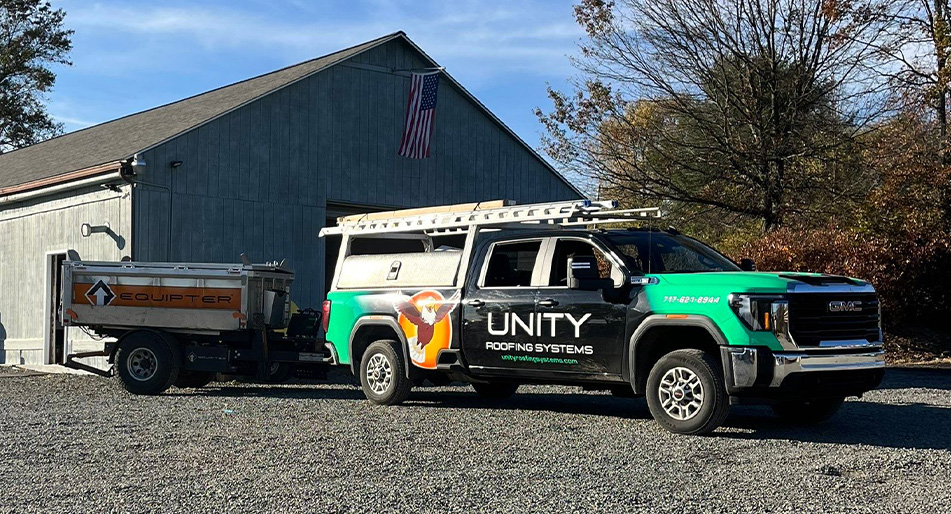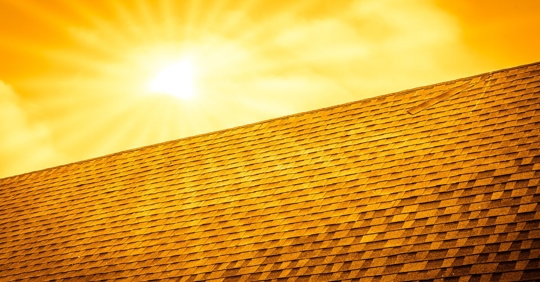Types of Roofing Materials
When you're considering what type of roofing material to use for your home, it's crucial to weigh how different materials interact with heat. Popular choices include asphalt shingles, metal roofing, tiles, and flat roofs, each offering unique benefits and challenges under intense summer heat. Asphalt shingles are a staple in the roofing industry due to their affordability and ease of installation. However, they have a downside: asphalt can absorb a significant amount of heat, which may lead to softening and degradation over time. On the other hand, metal roofing is gaining popularity for its durability and ability to reflect sunlight, thus reducing heat absorption. Tile roofs, typically made from clay or concrete, possess excellent thermal properties, keeping homes cooler in hot climates. Meanwhile, flat roofs often require special coatings to combat the expansive and contracting effects of heat, preventing premature wear.
Thermal Expansion and Material Degradation
The sweltering summer sun can significantly impact roofing materials through thermal expansion, a process where heat causes materials to expand and then contract once the temperature drops. This constant flux can eventually lead to material fatigue and degradation. In the case of asphalt shingles, thermal expansion can cause the granules on the surface to loosen, reducing the shingles' protective capabilities. Metal roofs, while generally more resistant, can experience stress at the seams and fasteners due to expansion and contraction cycles. For tile roofs, thermal expansion might lead to cracking if the tiles were not installed with sufficient allowances for movement. Understanding these dynamics is vital to choosing or maintaining a roof that will withstand the heat while preserving the integrity of its structure over time.
Heat-Induced Color Fading
Beyond structural concerns, excessive heat can also affect the visual appeal of your roof. Ultraviolet (UV) rays and high temperatures accelerate the fading of colors in roofing materials, significantly impacting a home's aesthetic and potentially its resale value. Asphalt shingles are particularly prone to color fading as their dark hues absorb and retain more light and heat. While metal roofs with special reflective coatings can resist ultraviolet rays to some extent, non-coated metals might still experience discoloration. Tile roofs, beautifully colored with natural pigments, may gradually lose their vibrancy if non-resistant finishes were used. For homeowners in places where summer sun can be intense, investing in UV-resistant materials can prevent fading and maintain curb appeal, enhancing long-term property value.
Roof Warping and Structural Integrity
As temperatures soar, the structural integrity of roofs can face severe challenges, particularly through the warping of roofing materials. Warping occurs when materials stacked together expand unevenly, causing shifts that compromise the roof’s stability and resilience. Asphalt shingles are especially susceptible to warping, curling at the edges when subjected to extreme heat, which can eventually lead to gaps and leaks. Metal roofs, although strong, can show signs of warping at the connections if not properly installed to accommodate thermal expansion. Maintaining robust structural integrity is essential for preventing such damage. Regular inspections during peak summer months can help identify warping issues early, ensuring roofs remain secure and protecting the home beneath.
Impact on Insulation and Energy Efficiency
Excessive heat isn’t just a threat to the roof’s structure; it also impacts its ability to insulate effectively. Poor insulation caused by heat can skyrocket a household’s energy expenses, as air conditioning units work overtime to combat rising interior temperatures. Asphalt shingles, notorious for heat absorption, can reduce the effectiveness of attic insulation, leading to uncomfortable living conditions. Metal and tile roofs, if properly installed with reflective coatings or underlayment, can enhance energy efficiency by reflecting more sunlight. Adding reflective roof coatings or installing cool roofs can significantly diminish cooling costs.
Moisture Buildup and Ventilation Challenges
Elevated temperatures can also trigger moisture buildup and ventilation issues within roofing systems, culminating in potential mold growth and wood rot. Heat exaggerates the problems in poorly ventilated attics by trapping moisture and raising humidity levels. This often goes unnoticed until substantial damage has occurred. Metal and flat roofs are vulnerable to such conditions when equipped with insufficient or aging ventilation mechanisms. As the moisture accumulates, it seeps into the roofing layers, fostering conditions ideal for mold proliferation. Introducing systems like ridge vents or attic fans can help manage humidity levels. For homeowners, investing in improved ventilation is a key preventative measure against the hidden perils of heat-induced moisture problems.
Cool Roofing Solutions
For homeowners eager to tackle the heat head-on, cool roofing solutions are an excellent first defense. Cool roofs are designed to reflect more sunlight and absorb less heat than traditional roofs, significantly reducing roof surface temperatures. There are different types of cool roofs, such as reflective paints, sheets, or special reflective tiles and shingles. These materials can decrease heat transfer into buildings, enhancing both comfort and energy efficiency. In regions where summer heat can become oppressive, opting for a cool roofing solution can yield substantial energy savings and prolong roof life. By managing roof temperatures, cool roofs help maintain home efficiency while lessening the potential for heat-induced damage.
Roof Coatings and Thermal Barriers
Another effective strategy to combat the adverse effects of temperature extremes is by applying roof coatings and thermal barriers. These protective layers act as a buffer against intense heat, enhancing a roof's longevity and preserving its appearance. Reflective coatings, available for all major roofing materials, deflect harmful UV rays and slow down thermal degradation significantly. Additionally, applying special thermal barriers under the roofing surface can prevent heat from penetrating too deeply, maintaining a more stable overall temperature. For homeowners, taking proactive steps to install high-quality coatings and barriers can reduce the need for frequent repairs and provide peace of mind knowing their roofs are shielded from the harshest summer conditions.
Regular Maintenance Schedules
Vigilant care through regular maintenance schedules can safeguard roofs from excessive heat damage. Establishing a routine that includes periodic inspections and timely repairs is essential for identifying minor issues before they escalate into costly problems. Such a schedule should entail checking for warping, noting any shingles or tiles showing signs of wear, and ensuring vents are unobstructed by debris. In the intervals between seasonal changes, maintenance efforts can include applying protective coatings and ensuring thermal barriers are intact. Having reliable roofing professionals like Unity Roofing Systems conduct these checks ensures longevity and resilience against the harshest of conditions. Regular maintenance isn't just about fixing what's broken; it's about proactive prevention to reduce future repair costs and maximize roof efficiency year-round.
Cost Implications of Heat Damage
Financially, heat damage to roofs can become an expensive issue for homeowners. Direct costs may include immediate repairs or replacements stemming from cracked shingles or warping, while indirect expenses revolve around heightened energy bills due to compromised insulation. In places with warm summers, ignoring roof maintenance can lead to escalating costs as issues that could have been resolved early turn into major headaches. Installing heat-resistant materials and coatings might involve a higher initial outlay, but the return in terms of reduced repair needs and energy savings makes it worthwhile. Additionally, efficiently managing heat can prolong the roof’s life, providing enhanced value over the long term. Homeowners should weigh both immediate and lifetime costs to understand the full financial impact of heat exposure on their roofing investments.
Insurance Implications for Heat-Related Damage
Another critical consideration is ensuring that insurance policies adequately cover heat-related roof damage. Standard homeowner insurance may not always cover issues arising from neglect or standard wear and tear exacerbated by heat. Understanding the specific terms of your policy and what is considered a natural disaster or accidental damage is vital. Roof damage from extreme heat, such as buckling or warping due to high temperatures, may require additional coverage or endorsements. Homeowners should regularly review their insurance plans to confirm they have the appropriate coverage.
Environmental Impact of Roofing Materials in Heat
Environmentally, the choice of roofing materials can significantly affect the community and local climate, particularly in terms of heat absorption and contribution to urban heat islands. Traditional dark-colored roofs absorb more heat, raising the temperature of the surrounding environment, while materials like metal or tile, which often come in lighter, reflective colors, can mitigate such effects. Choosing environmentally friendly roofing materials, therefore, aligns with both personal and community interests, reducing your home's carbon footprint and assisting in the fight against climate change. Embracing environmentally responsible roofing options supports the growing movement towards sustainability, promoting healthier urban living without compromising on aesthetics or performance.
Innovative Roofing Technologies
Emerging technologies are revolutionizing the roofing world and offering exciting new ways to manage heat. Options like solar reflective materials and smart roofs that adapt to temperature changes are setting the new standard for heat resistance. These technologies not only help to keep buildings cooler but also enhance energy efficiency. Smart roofs incorporate sensors and active materials that adjust to ambient conditions, offering real-time management of thermal properties. Such innovations promise substantial savings in energy costs and contribute to greater durability in roofing systems, especially in regions where managing intense heat is a seasonal necessity. Embracing these advances positions homeowners at the forefront of modern, sustainable living.
Integration of Solar Panels
Installing solar panels represents a dual-benefit solution for roofs: not only do they generate clean, renewable energy but also offer added roof shading. This shading can lower rooftop temperatures, contributing to less heat stress on roofing materials. Solar panels are also advantageous as they can significantly reduce reliance on the power grid, leading to substantial energy savings. Additionally, the excess energy produced can often be sold back to the grid, providing a financial return on investment. Integrating solar technology signals a commitment to sustainable energy consumption, enhancing property value while supporting eco-friendly initiatives.
Research and Future Trends in Roofing
The roofing industry is on the cusp of significant innovation driven by ongoing research and development into more heat-resistant, energy-efficient solutions. Scientists are exploring advanced materials like nanotechnology-enhanced coatings that provide superior UV protection and improved thermal regulation. There is also momentum towards creating fully recyclable roofing products, which minimize environmental impact. Future trends indicate a shift towards holistic roofing systems that integrate solar, reflective, and sustainable materials into cohesive designs serving multiple functions. As such solutions become mainstream, homeowners will have more options than ever for investing in durable, efficient roofing systems that promise performance as climate conditions continue to evolve.
Call Unity Roofing Systems to Take Care of Your Roof This Summer
By taking informed steps inspired by the insights above, homeowners can optimize their roofing systems against summer heat's impacts. If you're considering new roofing solutions or require maintenance on your existing roof, Unity Roofing Systems offers expert services tailored to your specific needs. Contact us today to learn how our experienced team can help you protect and enhance your home.
Call Unity Roofing Systems now at (717) 864-5671 or send us a message online.


